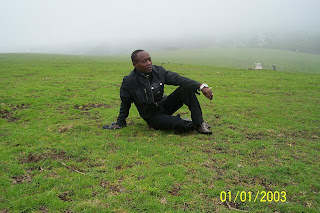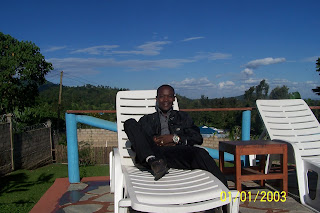
Mwalimu maarufu wa muziki wa Injili Afrika mashariki bwana John Shabani akishirikiana na Askofu Jangalason, hivi karibuni walifanya ziara ya kutembelea huko SUDAN, TURKANA pamoja na kambi kubwa ya wa kimbizi barani afrika inayoitwa KAKUMA. Katika kambi hiyo wapo wakimbizi kutoka nnchi mbalimbali za kiafrika kama: Sudan, Ethiopia, Somalia, Rwanda, Burundi, Eritrea, Kongo nk. Ziara hiyo ilikua ya ni ya kujitolea ili kuonyesha upendo kwa watu waliokatatamaa ya maisha.
Lengo kubwa la ziara hiyo ni kwaajili ya kuwatia moyo watu waliokata tamaa ya maisha. Maelfu ya watu walitiwa moyo kupitia nyimbo, neno la Mungu pamoja na kuwajali katika mahitaji yao ya kimwili kama vile: chakula, mavazi, maji nk.
Waturkana ni watu wanaoishi mpakani mwa Kenya na sudani, pia ni jamii ya watu wanaoishi katika mazingira magumu sana kutokana na ukame, joto, na hali ngumu ya maisha. Pamoja na mila na tamaduni zao za kutooga maji, kutojenga vyoo, kutovaa nguo nk, lakini hata hivyo hata upatikanaji wa maji ya kunywa ni mgumu.
Hapo chini ni historia fupi ya watukana (kwa lugha ya kingereza)
THE TURKANA TRIBE
The Turkana tribe is a nomadic pastoralist people that inhabit the Turkana district in Kenya's Rift Valley Province.
This Kenyan Nilotic tribe constitutes the second largest pastoralist community in Kenya next to the Maasai.
They speak the Turkana language, which is Nilotic and similar to the Maasai language.
The Turkana, like the Samburu and Maasai, still maintain their undiluted traditional way of life. They are distinguished as being great survivors, living in harsh and inhospitable terrain.
History
The Turkana tribe originally came from the Karamojong region of northeastern Uganda. Turkana oral traditions purport that they arrived in Kenya while pursuing an unruly bull. The land they occupy is harsh and very dry. The Turkana were, therefore, less affected by colonialism than other tribes because the British saw little value in their land.
Culture and Lifestyle
As with all other pastoralist tribes in Kenya, livestock, especially cattle, are at the core of Turkana culture. The Turkana people live a nomadic life, always moving from one place to another depending on the availability of pasture and water for their animals.
The Turkana place such a high value on cattle that they often raid other tribes to acquire more animals. This may be seen as theft, but to the Turkana and other pastoralist tribes in Northern Kenya, it is a perfectly acceptable traditional custom. Cattle raids are common between Turkanas and their neighboring tribes, especially the Karamoja of Uganda, and the Pokot and Marakwet of Southern Kenya.
Unfortunately, these cattle raids have increasingly become more dangerous due to an upsurge in the use of small firearms (guns and rifles) by Turkanas and their neighboring tribes. Today, many people in the region own unlicensed firearms for their own protection. The sight of a Turkana herdsman holding a G3 (or AK47) rifle while herding his animals is not strange in this region.
Unlike other nomadic tribes, the Turkana do not have many complex customs or strong social structures. Each Turkana family tends to be self-sufficient though at times a number of families may graze their animals collectively.
Polygamy is an acceptable way of life. A Turkana man can marry as many wives as he can afford to pay the bride price for. Like the Luo tribe and the Teso, the Turkana tribe does not practice male circumcision. They also do not hold any special initiation rituals to mark the transition to manhood.
The Turkana are nearly as colorful as the Maasai and Samburu in their regalia and dressing. Turkana men dye their hair with special colored soil, while the women adorn themselves with traditional jewelry and beaded necklaces. A woman's social status or class determines the quantity and style of jewelry she wears. From the point of view of a Turkana person, one glance at a woman is enough to know her standing in the society.
Art and Crafts
Some of the most beautifully crafted items from the Turkana are the bracelets and necklaces worn by the women. Turkana craftsmen also produce many other artistic items, especially weapons such as spears, clubs and knives. The Turkana also manifest special skills in metalwork, woodcarving, and stone carving.
Faith & Religion
Today, the majority of Turkanas still adhere to their traditional African religion. They believe in a god of the heavens/skies, whom they call Akuj or Kuj. Turkanas can pray directly to Akuj, or through the spirits of their ancestors. They normally call upon this god in times of crisis or during calamities such as extreme droughts.
The Turkana Life Today
Cattle are still the main source of livelihood for the Turkana, especially in the rural areas. The livestock provide food (milk and meat) and are also a source of wealth when sold for money. Fishing in Lake Turkana is another important source of income for those living close to the lake. While illiteracy levels are still high among the Turkana, there are a few well-educated Turkanas who have joined other sectors of the Kenyan economy.










































































